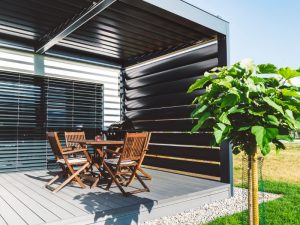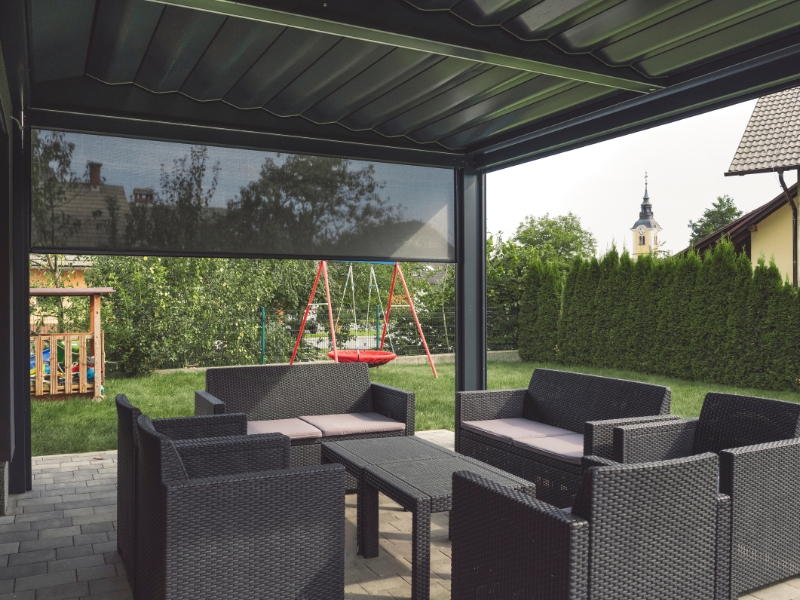Designing your outdoor space is about more than just aesthetics—it’s about comfort, function, and privacy. Many Australian homeowners are drawn to pergolas for their visual appeal, but the open design can have drawbacks, especially when installed in corners. That’s where well-planned corner pergola sides come into play, offering a practical and stylish way to boost privacy and usability. Whether you’re upgrading an existing structure or building from scratch, here’s what you should know before locking in your design.
Why do open pergolas often fall short of privacy?
Open pergolas are meant to be breezy and inviting, but in practice, they can leave you feeling a bit too exposed. Neighbours, foot traffic, or even busy streets can quickly disrupt your quiet time outdoors.
This exposure becomes a problem when it limits how and when you use the space. People often end up spending less time in their outdoor areas simply because they don’t feel comfortable. Without any form of enclosure, the pergola becomes decorative rather than functional.
Worse still, it doesn’t shield you from the elements. Wind, rain, and harsh UV rays can make the space unbearable during peak weather months. A structure without sides offers no buffer, leaving you to contend with nature head-on.
- Minimal privacy means reduced usage
- Constant exposure to wind and sun affects comfort
- Aesthetically pleasing but functionally lacking
- Lacks noise protection in busy areas
- Doesn’t accommodate outdoor furniture year-round
The absence of side panels can turn a promising pergola into a rarely used spot.
How does pergola placement in corners affect usability?
Placing a pergola in a corner might seem like a smart use of space, but without thoughtful design, it can lead to underwhelming results. Depending on their orientation, corners can funnel wind or trap heat. When airflow isn’t considered, comfort takes a hit.
Shadows can also fall unevenly. This can limit usability during certain times of the day, especially if the corner faces west or south. Meanwhile, asymmetrical fencing and garden layouts might make it hard to furnish the space in a way that feels balanced.
That sense of imbalance often leads to the area being ignored. You might find yourself decorating every part of your backyard—except the corner.
- Corners often receive inconsistent airflow
- Sun angles may create unwanted heat pockets
- Furnishing layouts can become awkward
- Underused spaces result from poor design
- Landscaping becomes less cohesive

These limitations highlight the need for better planning and smart upgrades.
Is a corner pergola with sides the solution to this?
Combining enclosure and strategic placement can turn an awkward corner into your favourite spot. A corner pergola with sides solves both exposure and usability issues by defining boundaries while managing airflow.
With sides in place, you gain privacy, control the direction of the breeze, and reduce glare from harsh sunlight. You also have the opportunity to add decorative touches like climbing vines, vertical gardens, or timber screening—all of which boost appeal and comfort.
When exploring options, many homeowners consider custom-designed pergolas for sale in Australia to help resolve unique layouts or boundary challenges common in corner builds.
- Adds privacy and blocks unwanted views
- Controls airflow and temperature effectively
- Turns unused corners into functional zones
- Improves outdoor enjoyment in all seasons
- Offers structural flexibility and design flair
It’s a versatile approach that helps bring underused areas to life.
What are the advantages of a corner pergola with sides?
When it comes to function, sides change everything. First, they block wind—a key benefit if your corner is exposed. This simple upgrade can extend your use of the space by hours, even in cooler months.
They also deliver much-needed shade, especially if you opt for UV-resistant screens or adjustable slats. These features reduce glare without sacrificing natural light. Sides also help you define purpose. Whether it’s for dining, lounging, or spa time, they create distinct zones that feel intentional.
Visual zoning also helps with backyard flow. Visitors can see where to gather while you enjoy the peace of a well-structured environment. If your yard is compact, this separation becomes even more valuable.
More ideas? For practical inspiration, you’ll enjoy this look at corner pergola designs that enhance small backyards.
| Feature Type | Primary Benefit | Best Use Scenario |
| Solid Timber Panels | Wind and privacy control | Exposed or elevated corners |
| Adjustable Louvers | Flexible light and airflow | Multi-season usability |
| Bamboo Screens | Aesthetic appeal with partial cover | Garden-themed or natural landscapes |
| PVC or Acrylic Panels | Moisture and UV resistance | Poolside and humid zones |
| Vertical Gardens | Natural insulation and privacy | Eco-conscious or small yards |
Zoning Segments the yard for specific use
- Reduces wind and glare in high-exposure areas
- Helps establish outdoor ‘rooms’ for varied use
- Enhances the value and appeal of small yards
- Supports both fixed and flexible design elements
- Creates a cosier, more controlled atmosphere
These perks combine to deliver a much more functional outdoor setting.
Which materials work best for a corner pergola with sides?
Choosing the right material can elevate the performance and style of your pergola. The timber is classic and warm but requires regular sealing to avoid warping. Aluminium panels are more modern and virtually maintenance-free—ideal for achieving clean lines.
If you’re looking for more natural coverage, bamboo screening or climbing trellis systems work well for airflow and aesthetic charm. For wet areas or poolside setups, opt for PVC or acrylic panels that resist moisture and UV rays.
A hybrid approach often works best. Combining fixed timber panels with adjustable aluminium louvres gives you both form and function.
Exploring the best poolside pergola ideas can offer seasonal design ideas that complement your choice of materials during warmer months.
- Timber offers warmth and traditional aesthetics
- Aluminium provides a modern, sleek look
- Composite panels reduce the maintenance load
- PVC and acrylic are ideal for poolside use
- Bamboo blends privacy with garden appeal
Choosing wisely can future-proof your outdoor structure for years to come.
Can you install a pergola side panel without council approval?
In many parts of Australia, pergolas are considered exempt from development until you add sides. Once enclosed, the structure might be reclassified, meaning you’ll need to check with your local council. Typical rules involve setback distances, drainage impact, and visibility from adjoining properties. Load-bearing additions, like thick timber walls or roof extensions, often require engineering reports or permits. Even if your addition is small, it pays to do your research. Not sure where to start? Look into passive cooling strategies using outdoor structures to align your design with best-practice climate performance.
- Council rules vary across suburbs and states
- Enclosed sides may trigger permit requirements
- Height, drainage, and proximity impact approval
- Engineering reports may be needed for solid panels
- Legal compliance ensures long-term peace of mind

Understanding your obligations early avoids delays down the track.
Final verdict on adding sides to your pergola
Adding sides to a pergola—especially in a corner setting—can turn a rarely used patch of the yard into a private haven. With the right materials, smart layout, and council checks, it’s a project that pays off in comfort and style.
If you’re not sure where to begin, getting planning advice from the team at Unique Pergolas could help shape your thinking. It’s a good way to gather information before making any big design choices. It’s a practical change that encourages better use of your outdoor space year-round.


